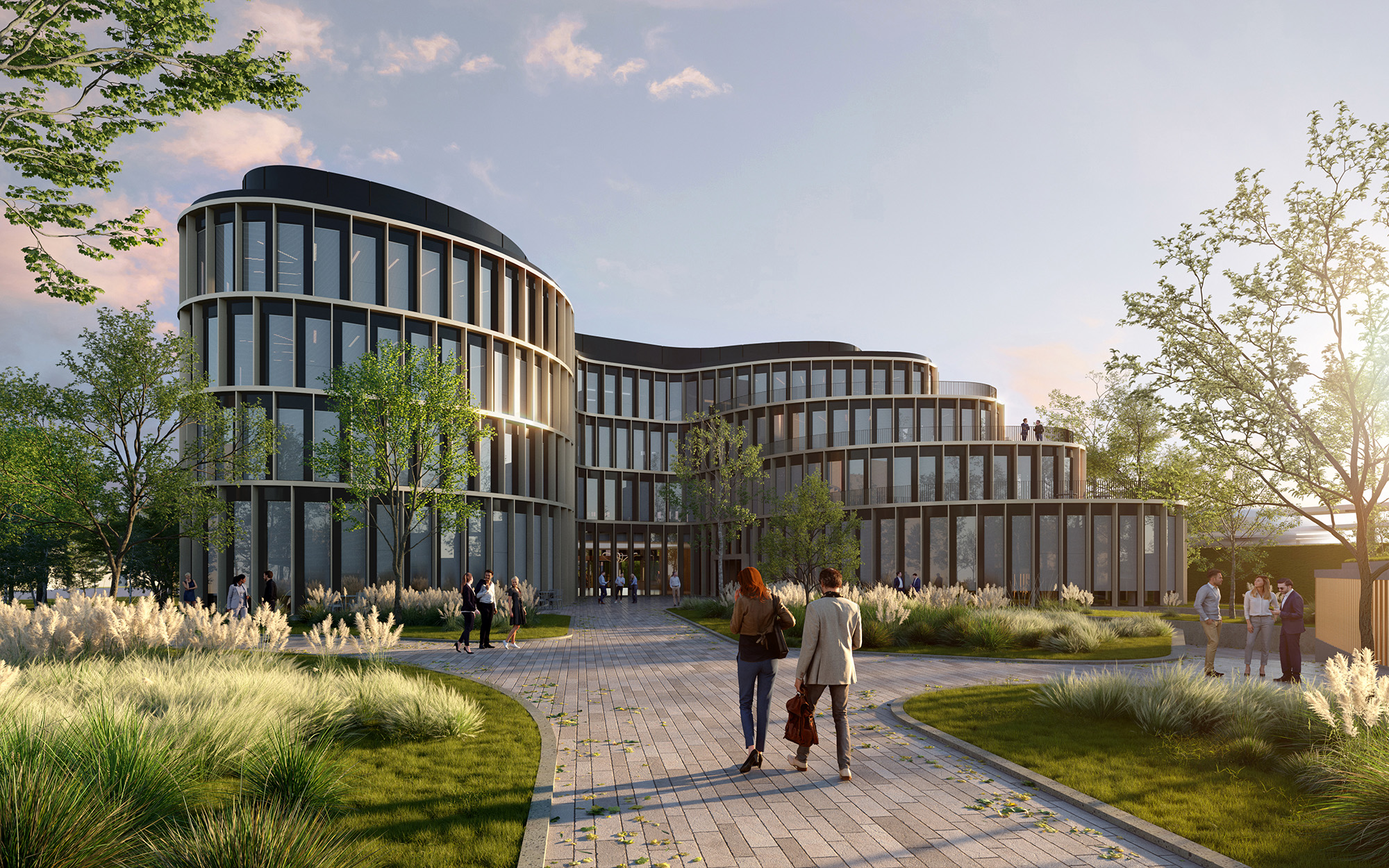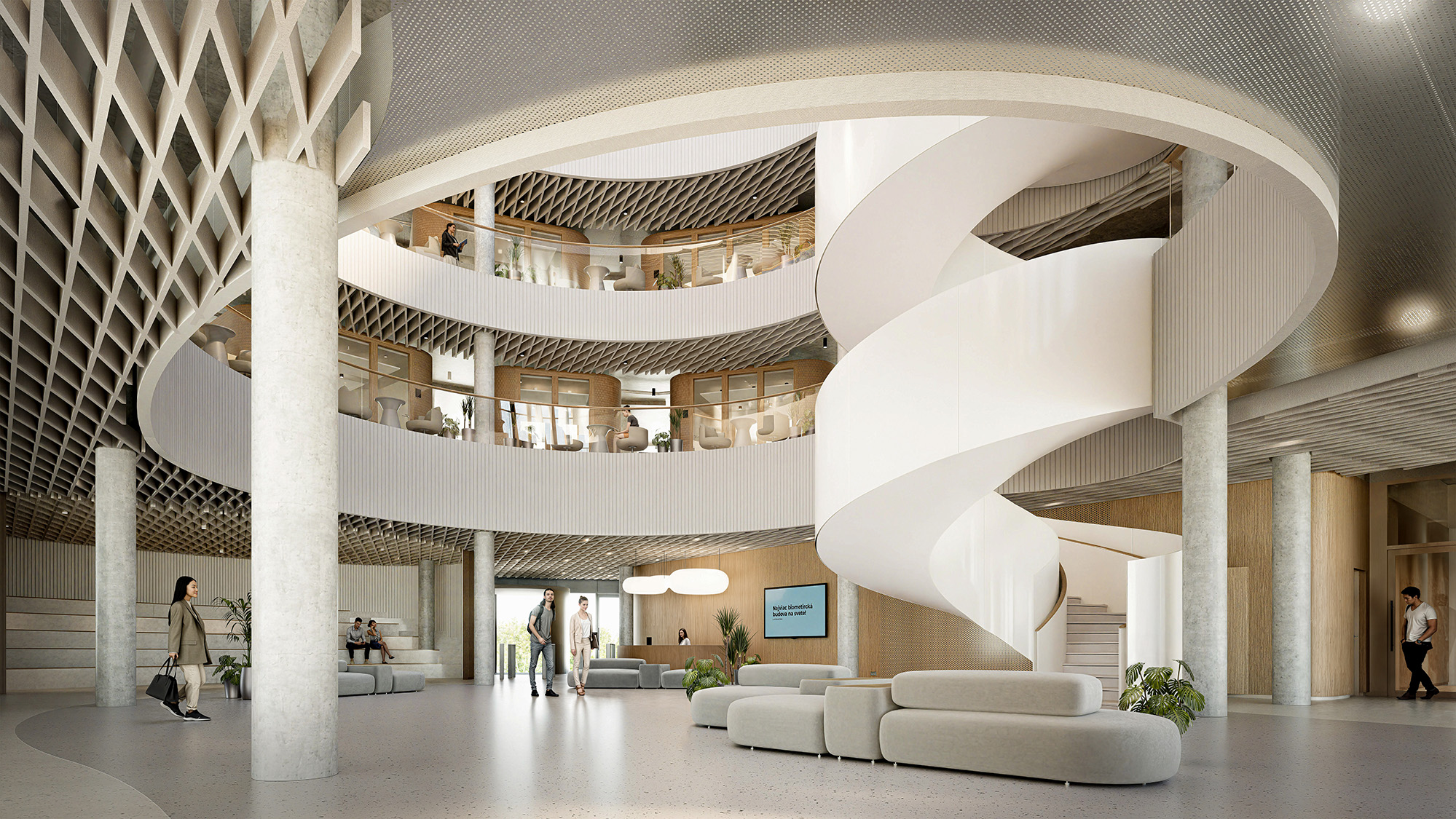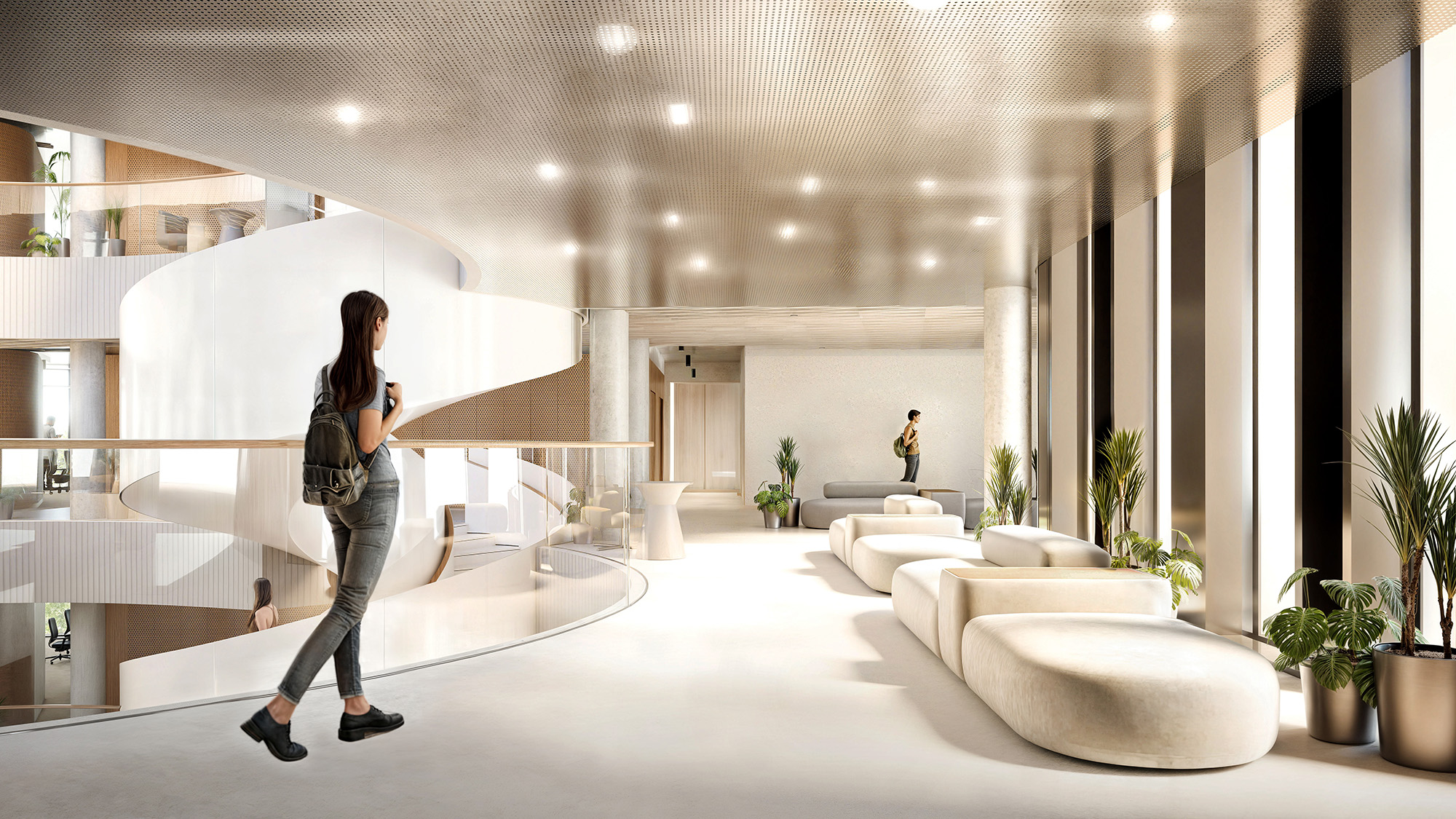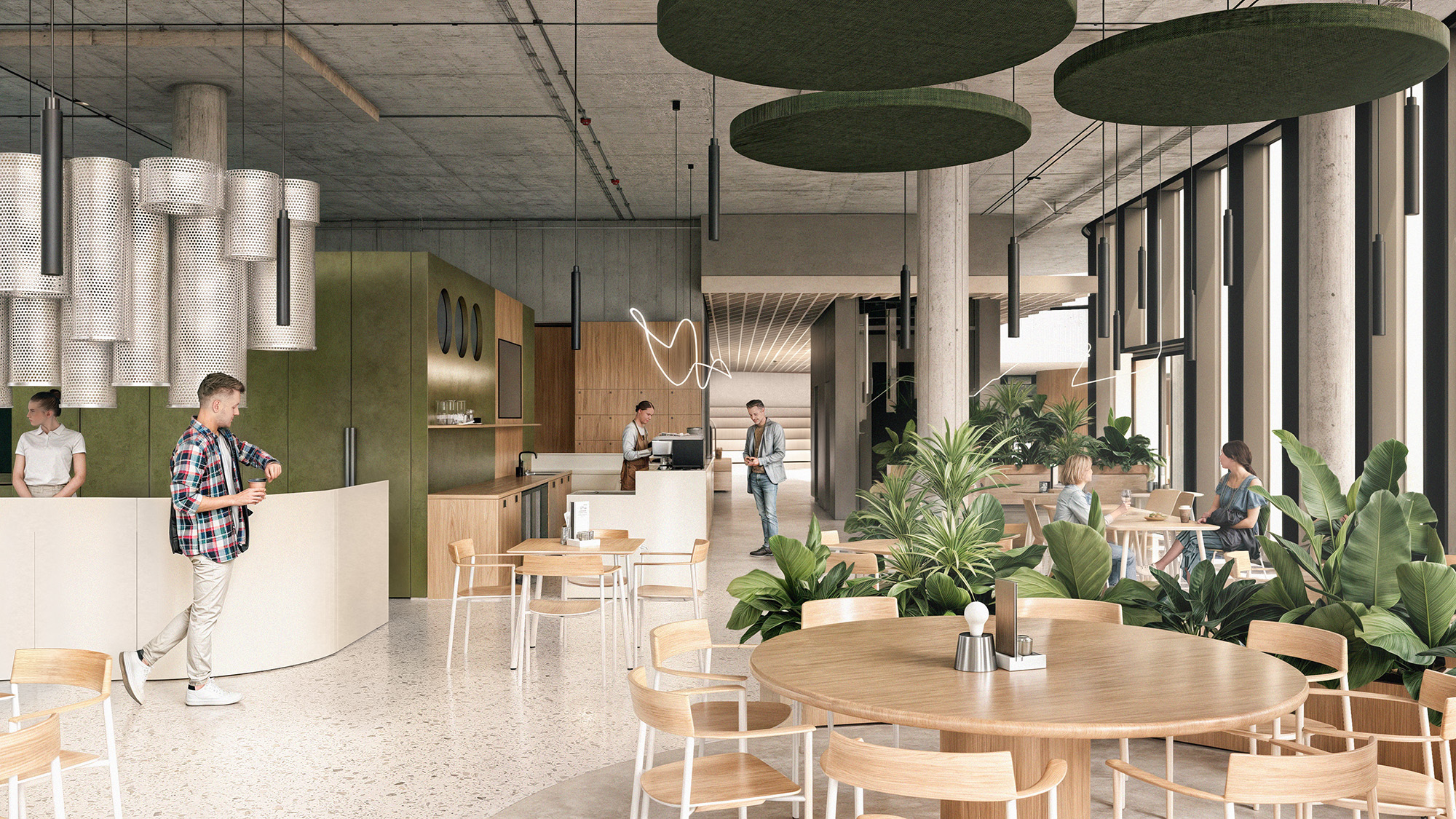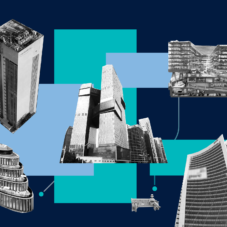The Future of Green Buildings Is Biometric: Here’s Why

The future of sustainable architecture is personal. As the industry moves beyond passive design and materials, the focus is shifting to how buildings can intelligently respond to their occupants. This innovation enables unprecedented precision in energy use, leading to dramatically more efficient and comfortable environments.
In the evolving landscape of sustainable architecture, traditional green building strategies, such as passive solar design, high-performance insulation, renewable energy integration, and sustainable materials have reshaped how we think about the environment. These approaches have delivered measurable gains in energy efficiency, carbon reduction, and occupant well-being. Yet as climate targets tighten and urban density rises, it’s becoming clear that these measures alone are no longer sufficient.
“The next frontier in sustainable building design isn’t just about what materials we use or how we harness energy; it’s about how buildings respond to the people within them.”
Historically, green architecture has primarily concentrated on the physical aspects of buildings, including their construction methods, material selection, and interaction with natural elements.
The next frontier in sustainable building design isn’t just about what materials we use or how we harness energy; it’s about how buildings respond to the people within them. Biometric technology, once relegated solely to security applications, is emerging as the unexpected catalyst that will push sustainable architecture beyond its current limitations.
How Real-Time Identity-Based Data Enables Energy Precision
While schedules and motion sensors have played a valuable role in reducing energy waste in smart buildings, their effectiveness is limited by static assumptions about occupancy.
Conference rooms are cooled whether they’re in use or not. Lights illuminate empty corridors. Ventilation systems run at predetermined rates regardless of actual demand. The result is significant energy waste. Biometrics like fingerprint recognition, facial scanners, and iris recognition introduce a dynamic layer of data: who is in the space, when they arrive, and what environments they require.
This identity-based approach enables:
· Personalized Environmental Control: By associating individual biometrics with user profiles, buildings can personalize temperature settings to match comfort preferences and optimize energy usage. This technology can be implemented in various ways depending on the office layout. For open-plan offices, the system can use adaptive seat allocation to guide employees to a specific temperature zone.
For example, a person who prefers a cooler environment could be directed to a section of the office maintained at 18°C, while someone who prefers a warmer setting is guided to a zone kept at 23°C. This approach ensures individual comfort while maximizing energy efficiency by heating or cooling specific areas rather than every individual workspace.
· Adaptive Lighting Scenes: Lighting can adjust automatically based on an occupant’s presence, preferences, and role. For example, an architect reviewing blueprints might activate bright, daylight-balanced lights, while a meeting leader’s entry could trigger dimmed, presentation-mode lighting in the boardroom.
· Data-Driven Energy Modeling: By aggregating identity-based entry and exit logs, an occupancy graph can be constructed. This graph predicts peak loads, allowing the building management system (BMS) to intelligently precondition spaces. Systems can be ramped up only when necessary and redundancies shut down before periods of inactivity.
· Predictive Resource Allocation: By analyzing patterns of individual and group movement through a building over time, AI-powered systems can predict future occupancy with remarkable accuracy. This allows for preemptive adjustments to HVAC systems, dramatically reducing the energy needed for heating and cooling, often the largest energy expenditure in commercial buildings.
Biometric-informed control precisely identifies occupants, moving beyond generic motion sensing. This innovation not only reduces wasted energy, it actively enhances comfort by delivering personalized lighting, temperature, and airflow the moment someone enters a space.
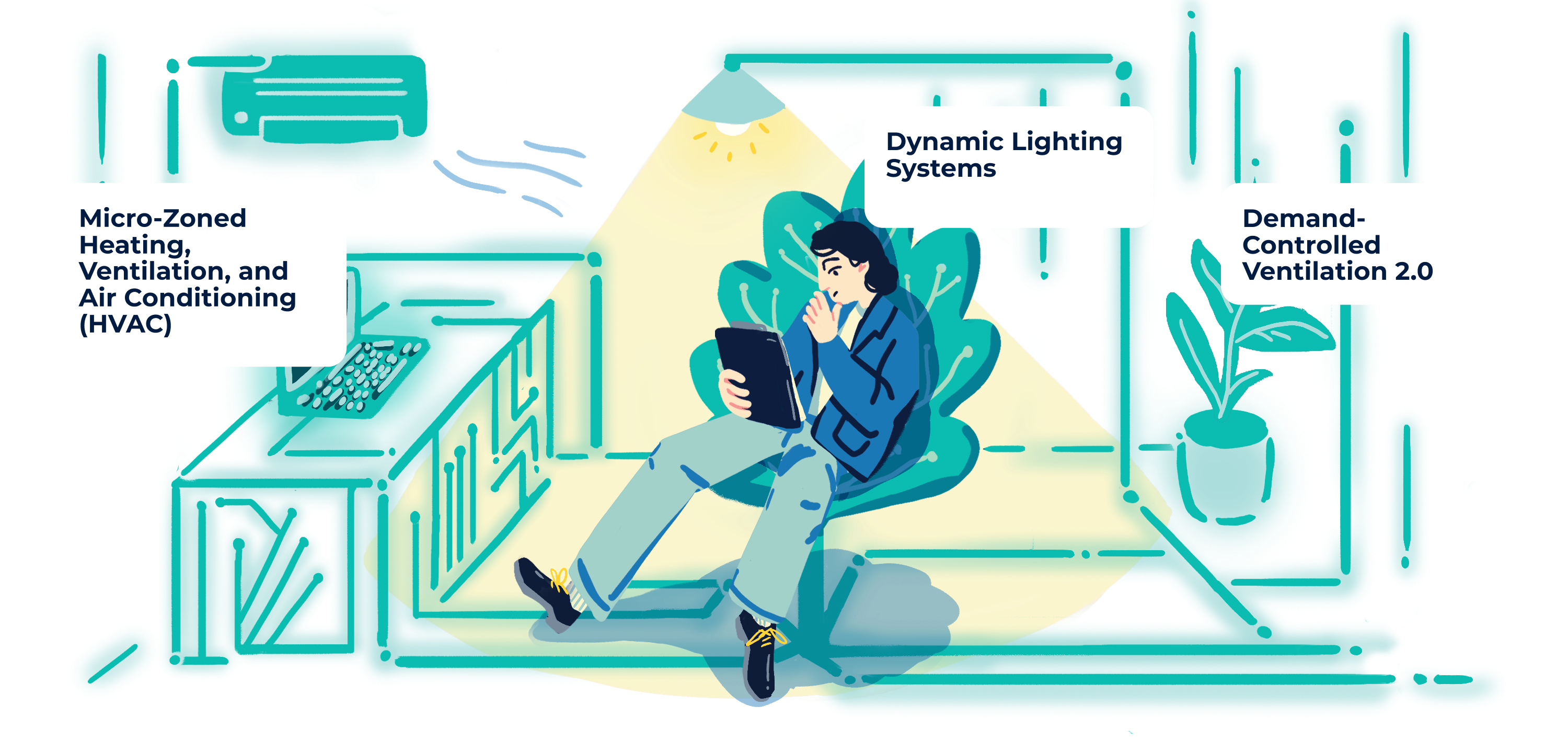
Replacing Scheduled Systems with Biometric-Triggered Zones
Building management is undergoing a fundamental transformation, shifting from a schedule-centric approach to one based on an actual presence-based approach that optimizes energy use, reduces waste, and enhances occupant comfort while cutting costs.
Let’s explore how a biometric-enabled building can be transformational:
Dynamic Lighting Systems
Traditional lighting operates on timers or motion sensors that lack precision. Biometric-enabled lighting can:
- Activate only when specific zones are occupied
- Adjust brightness and color temperature based on occupant preferences
- Learn and predict movement patterns to optimize energy use
- Gradually adjust lighting to maintain circadian rhythms while minimizing energy consumption
Demand-Controlled Ventilation 2.0
While demand-controlled ventilation has existed for years using CO2 sensors, biometric systems take this concept further:
- Ventilation rates can be tailored to the exact number of occupants
- Air quality can be adjusted based on known occupant sensitivities
- Fresh air delivery can be directed precisely where people are located
- Systems can learn individual breathing patterns and adjust accordingly
Micro-Zoned Heating, Ventilation, and Air Conditioning (HVAC)
Rather than heating or cooling entire floors, biometric systems enable micro-zoning:
- Individual temperature control that follows specific users
- Predictive heating/cooling based on regular movement patterns
- Automatic shutdown of systems in truly unoccupied areas
- Gradual temperature adjustments that maximize comfort while minimizing energy spikes
Relevant Regulations and Certifications
Intelligent systems are becoming widely adopted due to the necessity of fulfilling stringent green building certification requirements. Biometric and smart building systems directly contribute to achieving points and ratings in established global certifications like LEED, BREEAM, and WELL, providing a clear pathway to proving a building’s sustainability credentials and enhancing its market value.
The integration of different biometric technologies provides a more robust, data-backed pathway to achieving credits that are often qualitative or difficult to measure. The real-time data on occupancy and energy use provides concrete evidence of a building’s performance, eliminating the “performance gap” that is often cited as a challenge in post-occupancy evaluations. This creates a more defensible case for higher certification levels, directly translating the investment into a measurable and auditable outcome.
Here is an overview of how biometric technologies align with major green building certifications:
Ex. of LEED certified buildings: Taipei 101,Empire State Building NY, Shanghai Tower, the Hostal Empúries Hotel, Spain, etc.

Certification Body

LEED – A worldwide green building certification program, developed by the non-profit U.S. Green Building Council. Established in April, 1993 LEED certified green buildings in 186 countries worldwide.
Relevant Category/Concept
Energy and Atmosphere: The use of smart technologies like advanced energy metering and intelligent lighting control is explicitly mentioned as a strategy for better energy performance.
Materials and Resources: Focus on reducing construction and operational waste and using sustainable materials.
Innovation: Rewards projects for exceptional performance and strategies not explicitly addressed in the rating system.
Biometric Contribution
Real-Time Occupancy Data and HVAC Integration
Provides granular, real-time data on occupancy to inform AI-driven optimization of lighting and HVAC systems, leading to higher energy performance scores.
Reduction of Physical Credentials and Material Waste
Eliminates the need for millions of plastic access cards, fobs, and paper-based credentials, directly reducing material waste.
Innovation Credits Through Biometric Integration
Implementing cutting-edge, biometric-enabled systems for energy and waste reduction can earn valuable innovation points.
Ex. of BREEAM certified buildings: The HAUT residential tower in Amsterdam, Bloomberg EU HQ in London, Porto Office Park in Portugal, Adana Optimum Shopping Center in Turkey, etc.
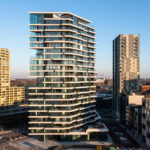
Certification Body

BREEAM – A worldwide sustainability building certification, established in 1990 in England
Relevant Category/Concept
Energy: Measures the efficiency of a building’s energy use and promotes the use of energy-efficient systems.
Health and Wellbeing: Assesses the comfort and well-being of occupants, including factors like thermal comfort and lighting.
Biometric Contribution
Facilitates the integration of intelligent lighting and HVAC controls, providing a comprehensive framework for optimizing energy performance.
Enables personalized lighting and thermal controls based on biometric identity, directly enhancing occupant comfort and well-being.
Ex. of WELL certified buildings: the San Francisco International Airport, Three Garden Road in Hong Kong, EDGE Technologies HQ in the Netherlands, Okta Global locations, etc.
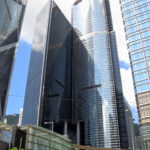
Certification Body

WELL – A California-based healthy building certification program, established in 2013.
Relevant Category/Concept
Comfort: Focuses on creating a distraction-free and soothing environment with thermal and acoustic controllability.
Mind: Supports mental and emotional health through design and technology.
Performance Rating: Uses data to improve building performance and support human health.
Biometric Contribution
Enables personalized thermal and lighting control, ensuring a comfortable environment tailored to individual preferences.
Contributes to an intuitive, secure, and seamless environment, enhancing a well-being while minimizing friction.
The real-time data collected by biometric systems can be used to measure, benchmark, and improve
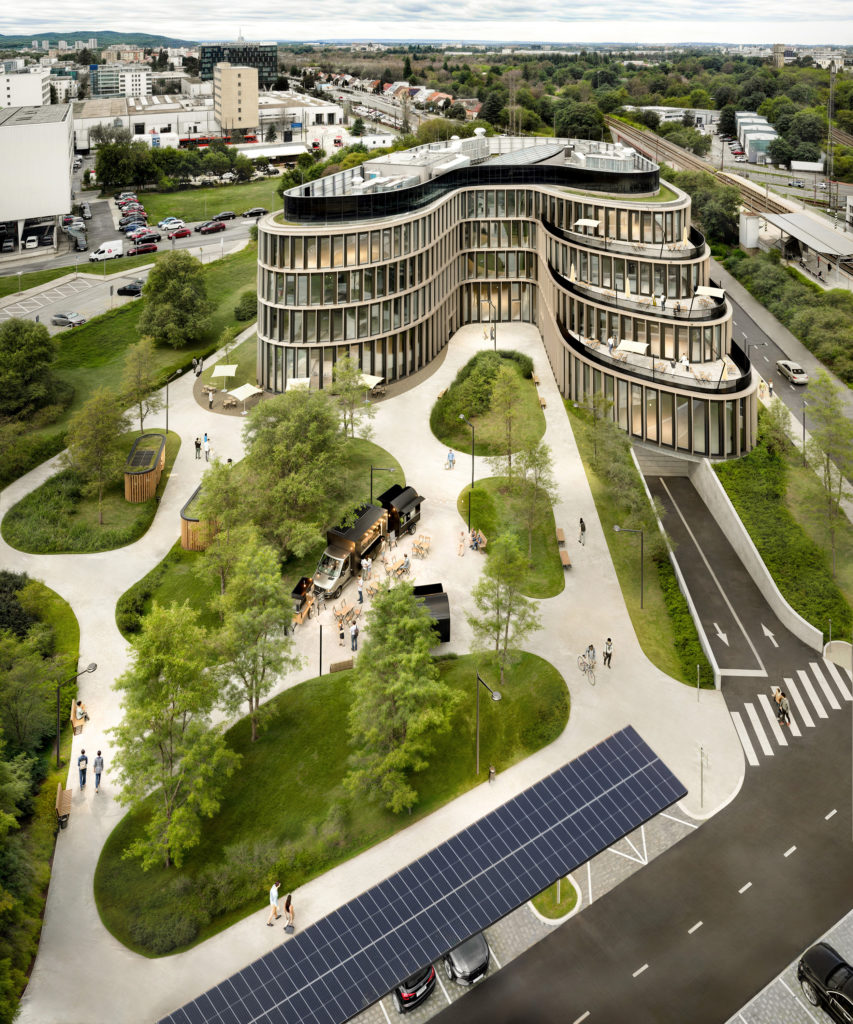
The new global headquarters for the biometrics company Innovatrics is truly one of a kind, earning its title as the world’s most biometric building. The structure’s most captivating feature is its facade, which is directly inspired by a human fingerprint. This brilliant design serves as a literal and monumental expression of the company’s core identity, seamlessly blending its advanced technology with its physical home in a way that is both innovative and instantly recognizable.
Case in Point: Bratislava’s Biometric-Enabled Building
As the urgency to decarbonize intensifies, the definition of a “green building” is evolving. The first wave of sustainable architecture focused on passive design strategies, energy-efficient materials, and renewable energy systems. These innovations laid the foundation for lower emissions and better resource stewardship. But they largely addressed the static elements of a building, what it’s made of and how it’s constructed.
By enabling buildings to recognize who is present, when, and where, biometrics unlock a new layer of intelligence, allowing systems to respond dynamically to human activity. This means lighting, HVAC, and other energy-intensive systems can be fine-tuned in real time, reducing waste and enhancing comfort simultaneously.
Deploying biometrics in smart buildings isn’t just about access control, it’s about precision. It replaces broad assumptions with granular data, turning buildings into adaptive environments that learn from their occupants.
In Bratislava, Slovakia, biometric technology company Innovatrics is developing what is set to be “the most biometric building in the world” for its new headquarters. Scheduled for an early 2026 opening, this innovative facility will function as both corporate offices and a demonstration of biometric technology’s potential to revolutionize building performance.
The building incorporates comprehensive biometric systems that:
- Recognize employees and visitors through multiple modalities (face, fingerprint, palm recognition)
- Automatically adjust environmental conditions based on occupant identity and preferences
- Track movement patterns to optimize space utilization and energy consumption
- Provide detailed analytics on resource usage and efficiency

Norbert Račko
Norbert brings over 25 years of construction experience, having advanced to top management at a leading real estate developer before launching his own projects. As Innovatrics’ external project manager, he ensures deadlines are met and oversees every technical detail with precision, driving the creation of one of the most sustainable office buildings in the CEE region.
“Our in-house biometric system offers employees and visitors a seamless experience,” says Norbert Racko, project manager. “By eliminating the need for physical cards and keys, we’ve enhanced security, simplified navigation, and elevated overall comfort throughout the building.” A friendly robot dog might even greet you by name. There will be no need to stop to sign in or wait for someone to show you around. The system directs the elevator to your destination, identifying the person you’re visiting and granting access as required.
“This is biometric technology as a hospitality tool, not just security. It demonstrates to clients and partners how these solutions can enhance both the safety and convenience of offices.”
This is biometric technology as a hospitality tool, not just security. It demonstrates to clients and partners how these solutions can enhance both the safety and convenience of offices. The entire building will serve as a live demo. It will show how a modern enterprise can use biometric authentication to replace traditional access cards, monitor occupancy, and protect sensitive areas all at the same time.
The Intelligent Future of Green Architecture
The future of green architecture is not just in what buildings are made of, but in how they intelligently adapt to the people who inhabit them.
The first phase of the green building movement focused on transforming the physical fabric of architecture, emphasizing energy-efficient materials, passive solar design, improved insulation, and renewable energy systems. In today’s dynamic world, where occupancy patterns shift by the hour and user needs evolve in real time such static solutions are no longer enough.
“The future of green architecture is not just in what buildings are made of, but in how they intelligently adapt to the people who inhabit them.”
The second phase of green architecture, enabled by biometric technology, reimagines buildings as responsive systems. By identifying who is present and what they need, biometric-informed buildings become adaptive environments: living systems that learn, respond, and optimize continuously. This shift marks a new era in sustainable design, one where intelligence, personalization, and real-time responsiveness drive deeper energy savings and enhanced occupant comfort.
As climate change demands ever more efficient use of resources, the integration of biometric systems into green building design represents a critical evolution. The buildings of tomorrow won’t just be constructed with sustainable materials, they’ll actively participate in sustainability through intelligent, identity-based resource management.
AUTHOR: Aleksandra Krstevska
ILLUSTRATIONS: Julia Latusek






